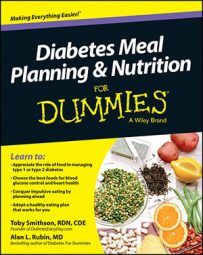Diabetics don’t really require any special health foods, but grocers often place some very useful foods in a location that suggests they’re special. Here’s what you might find in the health food aisle.
Alternative milks, for those who are lactose intolerant, can help add a dairy-like touch to cereals and hot chocolate. Soy milk, nut milks, or coconut milk offer a milky texture with fewer calories, less fat, less carbohydrate, and are usually fortified with vitamin D and other nutrients.
Gluten-free products are essential for those managing celiac disease, which is much more common among people with type 1 diabetes than among the general population.
A variety of uncommon grains can add a little zip to your food life. Amaranth, barley, flax, millet, quinoa, rye, spelt, and other grains, seeds, and flours can fit well into your diet and add extra nutrients.
There’s just no way around developing an understanding of and an appreciation for nutrition facts labels (you may have noticed). Managing carbohydrate, fat, and sodium in your diet are the keys to blood glucose control and heart health. Meet with a registered dietitian. Remember, the information is not difficult — it’s a subconscious reluctance to think too much about food that keeps the light bulb from lighting up. Just don’t give up.

